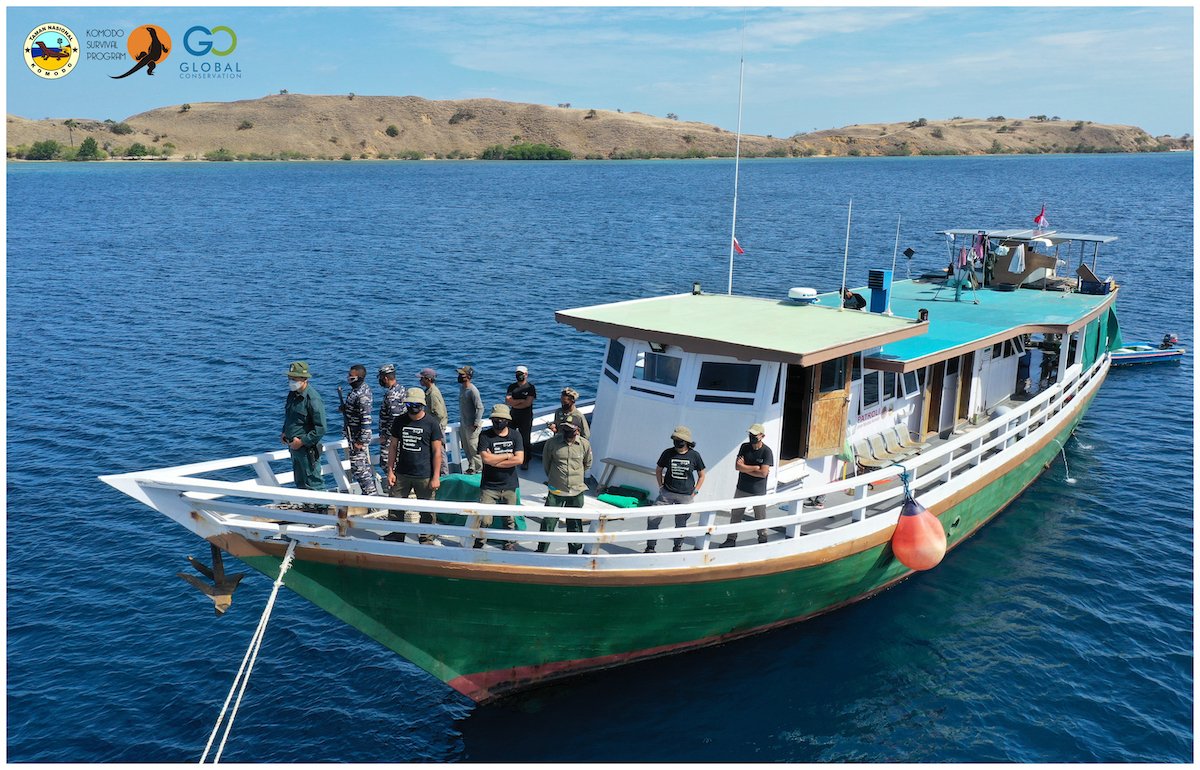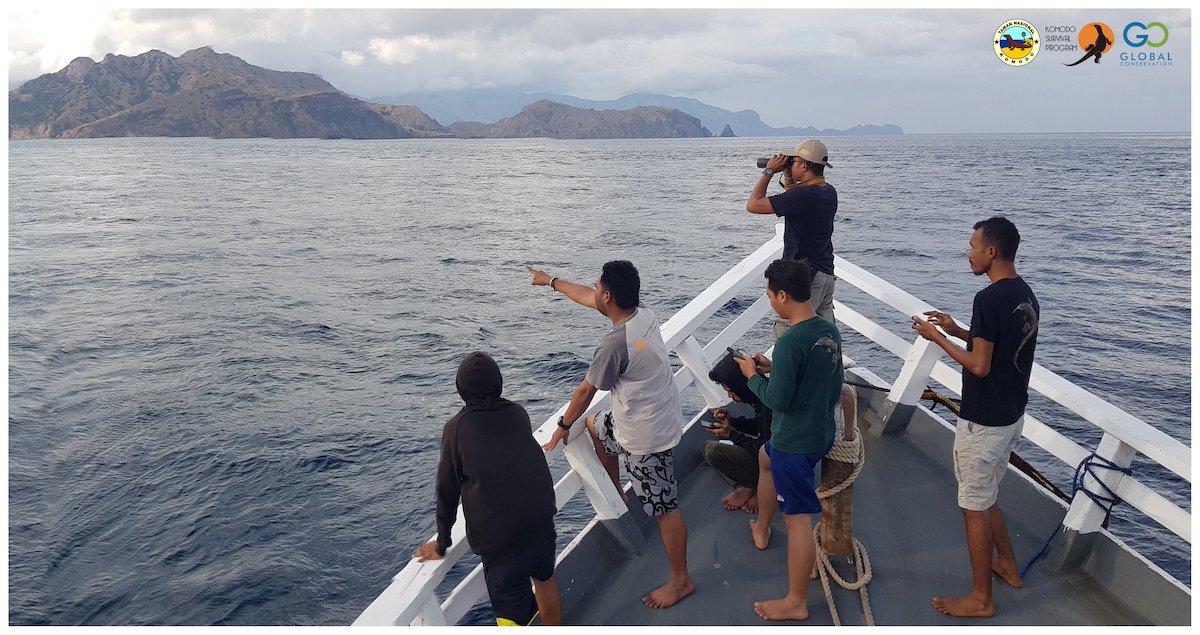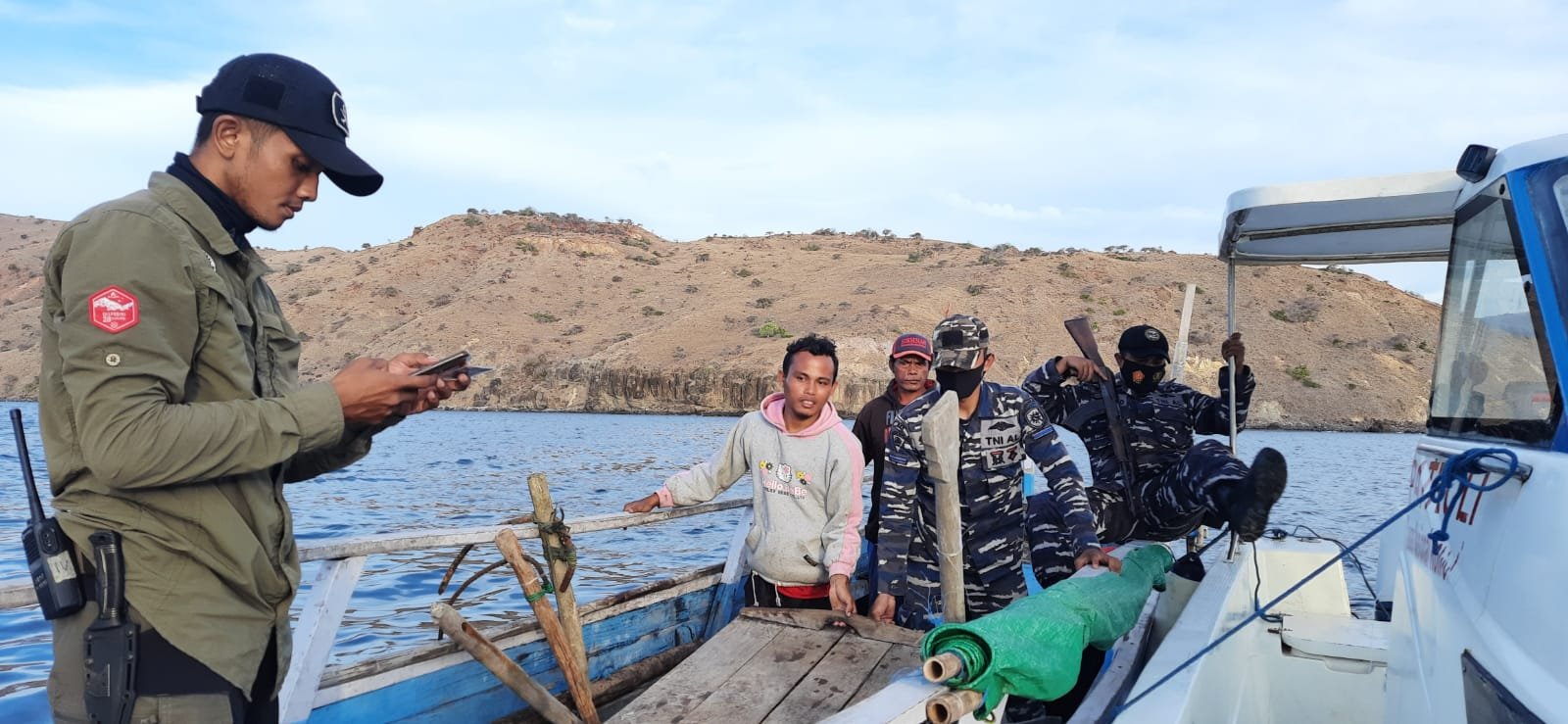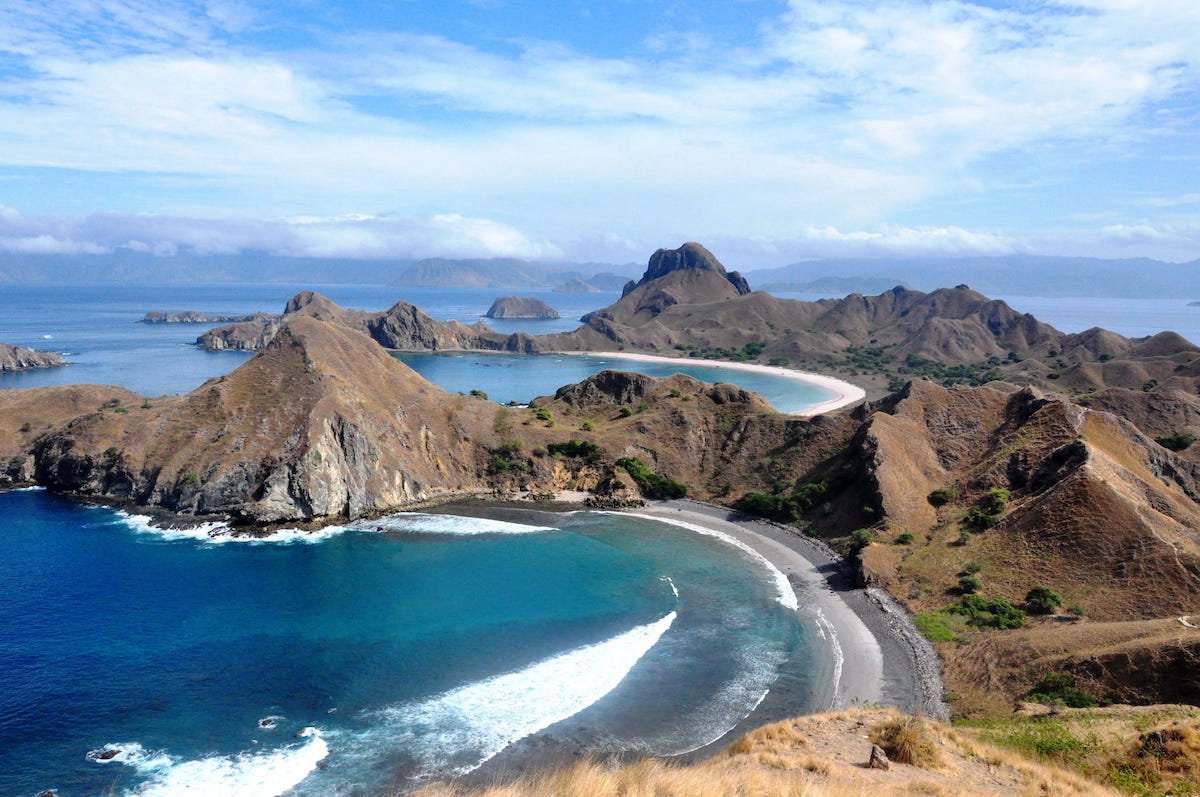Komodo World Heritage Site 2021 Progress Report
Global Conservation has supported a 6-month Komodo dragon conservation pilot project through the Komodo Survival Program (KSP) in strengthening the existing conservation effort in Komodo National Park (KNP), Indonesia.
Working hand in hand with the government authority, KSP has begun to implement the SMART Program for field data collection and analysis in order to determine the best wildlife management strategies. In addition to this, the monitoring program has been strengthened within the protected areas of Komodo National Park by integrating wildlife surveys with patrolling activities in remote areas on the west coast of Komodo, south coast of Rinca, and several smaller remote islands.
To improve the effectiveness of marine patrols, KSP has also equipped KNP patrolling boats with a portable marine radar unit and a tablet device to collect data. Thirteen ranger posts also have been equipped with smartphones to collect monitoring and patrolling data. Global Conservation, through KSP, also assisted the Komodo National Park authority in refurbishing an old KNP building for a command center that serves as an information and education center and also as a base camp for monitoring teams.
During the 6-month pilot project, KSP has assisted KNP in increasing the capacity of Komodo National Park rangers by conducting training in wildlife monitoring techniques, SMART mobile applications, and SMART desktop programs. Furthermore, KNP and KSP have been conducting integrated wildlife monitoring and patrolling activities both in terrestrial and marine areas, utilizing camera traps and SMART.
The patrolling team consists of KNP forest rangers, KSP staff, and Indonesian Navy staff members. From August to November 2021, the pilot project in integrating wildlife monitoring and patrolling activities has increased patrol effort from 6,551km to 10,094km. KSP and KNP have also increased the coverage area from 432km2 to 723km2 across both land and sea. The wildlife monitoring activities have successfully assessed the distribution of Komodo dragons in the remote parts of Komodo Island to fill in gaps in our knowledge.
1. Early Assessment: Preliminary Survey of West Komodo
KSP has assisted KNP in conducting a preliminary survey on the west coast of Komodo Island. The main objective was to identify the area within Komodo National Park that needs to be monitored more frequently in order to mitigate anthropogenic threats such as deer poaching and savannah burning by poachers.
Furthermore, this survey is also aimed at identifying areas that still lack wildlife database information such as Komodo dragon occupancy and deer population indices. These areas will be monitored during the next three months in addition to the intensive surveillance programs.
During this survey, KSP and KNP also identified the best locations for marine patrol ship anchors, the best beach landing sites for dinghies, and the best land patrol routes. The survey team also tried to identify locations for fishing boats or tourist boats anchored or doing activities in the western and southern parts of Komodo Island.
2. Training in Population Monitoring and SMART Program
To improve the capacity of KNP rangers, KSP provided several intensive training sessions (in-class training and in the field) for the staff of the 13 stations within KNP. The training consists of wildlife monitoring techniques and use of SMART programs.
Training on Komodo dragon population monitoring techniques
Komodo Survival Program has intensively trained 14 dedicated young KNP rangers in ecological monitoring methodology. The rangers received both theoretical and practical instruction on Rinca Island in June 2021. The training was aimed at establishing a dedicated monitoring team, able to handle komodo dragons with standardized techniques for population monitoring, human-wildlife conflict purposes, and to better understand Komodo dragon ecology.
This seven-day training session consisted of an in-class meeting to ensure all the trainees had a better understanding of ecology, including the behavioral ecology of Komodo dragons, while the field session was aimed at developing and encouraging skills for Komodo dragon handling, camera trapping, and solving human-wildlife conflict.
SMART Trainings
In July 2021, Komodo Survival Program continued to increase the capacity of Komodo National Park rangers by conducting a training session in wildlife monitoring techniques using the SMART (Spatial Monitoring and Reporting Tool) mobile applications and desktop program.
Twenty-five rangers that are stationed among KNP's 13 guard posts, along with other strategic staff who work in the head office in Labuan Bajo, participated in the training, which consisted of several intensive sessions (practical and theoretical).
Due to the the COVID-19 pandemic, the 3-day SMART training was partially conducted virtually. Park rangers were divided into three locations, including the command center. Although some of the training sessions were conducted online, the rangers enthusiastically followed the sessions on Zoom. These trainings aimed to help the park rangers to master the digital field data collection and analyses, which also allows the rangers to record and track their monitoring and surveillance activities.
The training utilized pre- and post-evaluation methods to assess training outcomes. There was an overall increase in knowledge from the initial average score of 41 to 64 by the end of training.
Following the in-class training, the program began the practical training by deploying the participants to KNP's 13 guard posts. Komodo Survival Program provided technical assistance in the field.
During the 4-month trial period in SMART implementation, KSP assigned a staff member to actively assist the rangers in collecting, inputting, and verifying data, as well as for basic analysis. In addition, during SMART implementation from October to December 2021, a total of 37 Komodo National Park rangers were involved in refreshment trainings at KNP headquarters in Labuan Bajo.
Based on the program evaluation and assessment at the end of the pilot project, KSP and KNP have successfully implemented the SMART application amongst KNP's 13 guard posts. A total of 61 out of 72 park rangers (85%) are now able to collect field data (patrolling and monitoring) using the SMART application (cyber tracker), and 32 of them (51%) are able to input the data and conduct basic data analyses using the SMART desktop application.
The future implementation of this technology is expected to help the park managers of Komodo National Park monitor the rangers’ activities and to provide the best wildlife management strategies for the national park scientifically, along with better patrolling management.
3. Infrastructure Support on Marine Patrol Ship
Komodo National Park is located in the eastern part of Indonesia, consisting of five major islands and more than one hundred smaller islands. As an archipelago, the boundary of the park is the ocean. Therefore, to protect the park, marine patrol is one of the most important components. To encourage and optimize protection and patrolling activities, a proper upgrade of facilities and infrastructure, such as boats, is required.
To date, the park has a pinisi boat patrol and several smaller speed boats. The large wooden pinisi boat also serves as a floating ranger station that regularly patrols the national park boundary. Even though the boat is still in good condition, it required some supporting equipment such as marine radar and a tablet device to support the patrolling activities. The marine radar was urgently needed to monitor the movement of vessels into and out of Komodo National Park, helping officers find and check the legality and activities of each ship.
At the beginning of the pilot project that was funded by Global Conservation through KSP, we purchased and installed a marine radar (Furuno 1815) and a large anchor to support the KNP pinisi boat for better monitoring activity. We also equipped the boat with a tablet device to help the captain of the boat use marine navigation applications. Furthermore, the tablet is also useful to record patrol tracks using the SMART application. Previously the boat didn’t have any GPS or other navigation device to help the captain navigate the boat.
4. Command Center Establishment
Komodo National Park authority has permitted one of their unused buildings to be renovated as a dedicated database, information and education center. Global Conservation, through KSP, helped the KNP authority to refurbish this building for a command center that has strengthened database and information management, along with supporting fieldwork coordination and preparation. This building also serves as a basecamp for the KNP and KSP monitoring and patrolling team.
Since July 2021, both formal and informal training and assistance, including the implementation of the SMART application program, have been conducted in this building by Komodo Survival Program and Komodo National Park authority. The newly-renovated building is equipped with furniture and computers to support the monitoring and patrolling activities.
5. SMART Implementation
The SMART-Resort Based Management (SMART-RBM) system has been implemented regularly at the 13 KNP guard posts, following the SMART introduction training.
The procurement of smartphone devices funded by Global Conservation was very helpful for the SMART RBM implementation process in KNP. Since November 2021, all data has been retrieved using the SMART application. From August-December 2021, KNP carried out 104 patrols covering an area of 6,551km at sea and on land.
Marine patrol and wildlife monitoring on the West Coast of Komodo Island and South Coast of Rinca Island
In addition to routine and independent SMART patrol by KNP, KSP and KNP have conducted integrated and intensive surveillance and Komodo dragon monitoring programs on the west coast of Komodo Island and the two remote small islands of Nusa Kode and Gili Motang. These activities were also optimized to obtain the field data using the SMART application and camera traps.
The integrated patrolling team covers marine areas and was able to actively monitor boats entering the Komodo National Park marine zone (both fishing and tourist boats). The integration of terrestrial wildlife monitoring surveys with marine and land patrols is effective in increasing the coverage of areas that have not been surveyed previously.
The mainland area of the west coast of Komodo Island has fairly extreme terrain, making it challenging for rangers to carry out land patrol activities in this area. In addition, the West Komodo ocean also often has quite extreme conditions such as large waves and strong currents. Despite these challenges, the joint team was effective at surveying land areas that previously lacked monitoring.
The team recorded potential disturbances from human activities that previously might not have been monitored. Numbers of animals (especially Komodo dragons) were recorded in an area that is not a regular population monitoring location, adding to our knowledge of the Komodo dragon population and range.
Komodo dragon encounters are also recorded within these trips, including active and potential nest sites. The surveys also found several springs on Komodo Island, which is dominated by savanna, and also cultural relics of the ancient people who had lived in the area.
Key Outcomes
Global Conservation's assistance in various fields via KSP have brought positive impacts for KNP management. For instance, the protection and frequency of patrols have been increased and the human encroachment potential in remote locations has been identified and prevented.
The pilot project supported twenty-two additional patrolling activities and has increased the patrolling distance from 6,551km to 10,094km, with the coverage areas increased from 432km2 to 723km2 both on land and at sea.
These activities improve and strengthen the management function of KNP management, especially in the area of protection and prevention of human encroachment. Furthermore, wildlife monitoring that was focused on assessing the distribution of Komodo dragons in remote parts of Komodo Island successfully filled in gaps in our knowledge of Komodo dragon distribution in this area.
6. Recommendations & Future Plan
The 6-month pilot project funded by Global Conservation has demonstrated significant effectiveness in improving Komodo National Park management, especially increasing the park rangers' and technical staff's skills in wildlife monitoring and patrolling efforts. The increased frequency and larger coverage areas of monitoring and patrols, as well as the use of SMART technology, has certainly optimized management and improved the quality of data collection in the field.
Moving forward, SMART implementation will be focused on strengthening data analysis by establishing an integrated information system management with the national SMART database managed by the Ministry of Environment and Forestry’s headquarters. Continuing financial support from partners and donors will help ensure more sustainable and effective management of Komodo National Park in the long run.






















